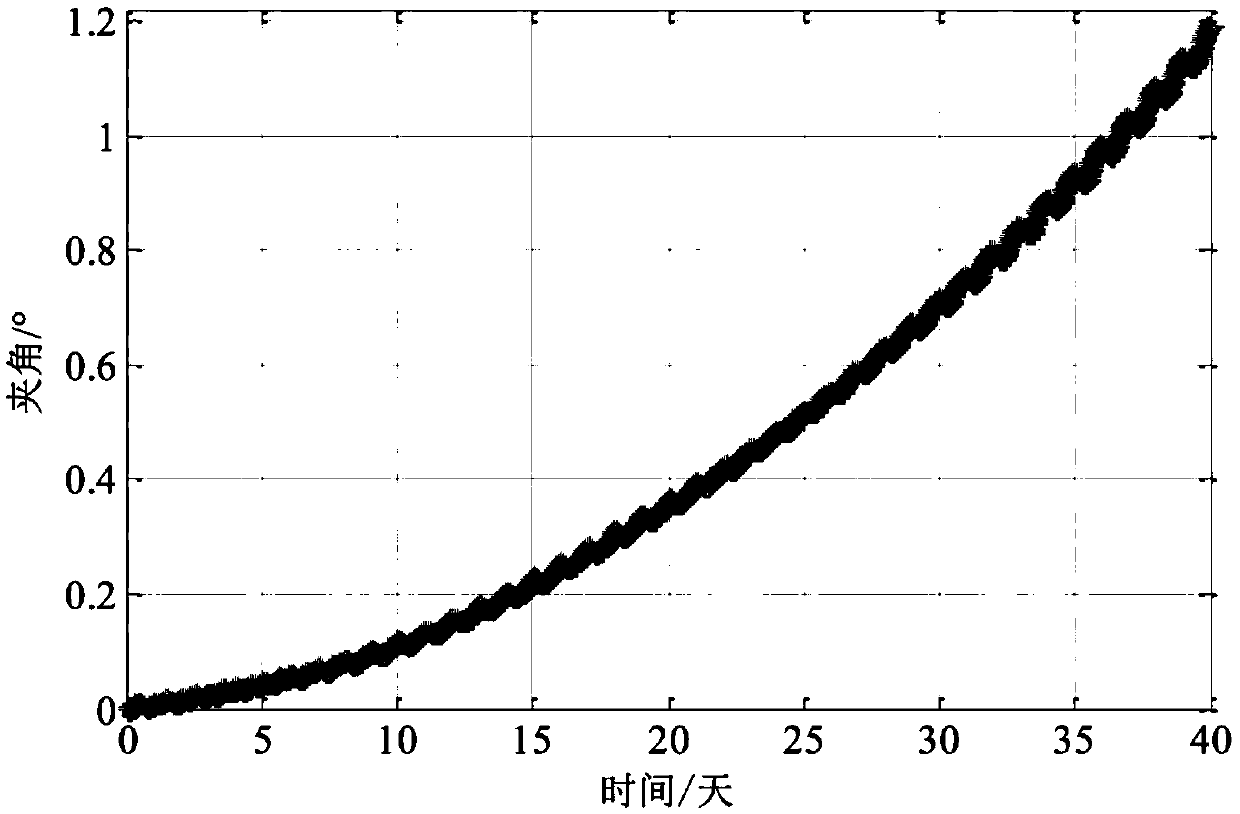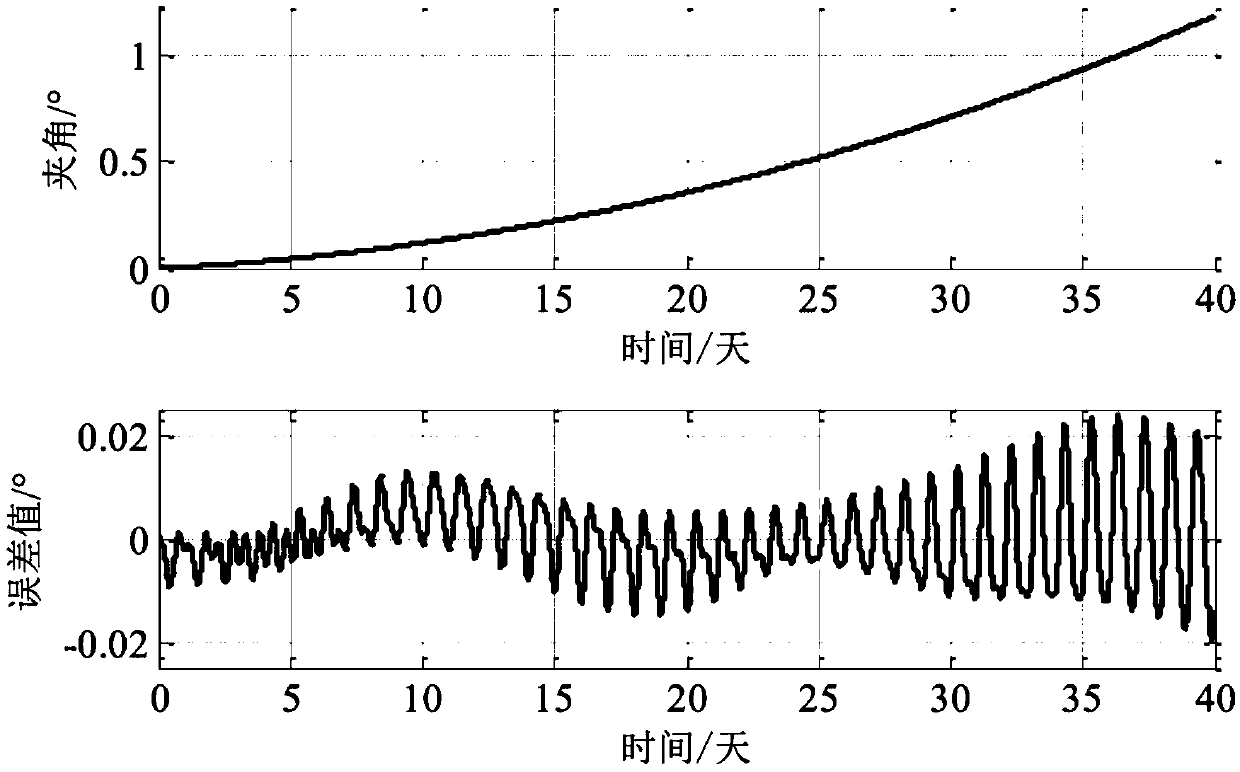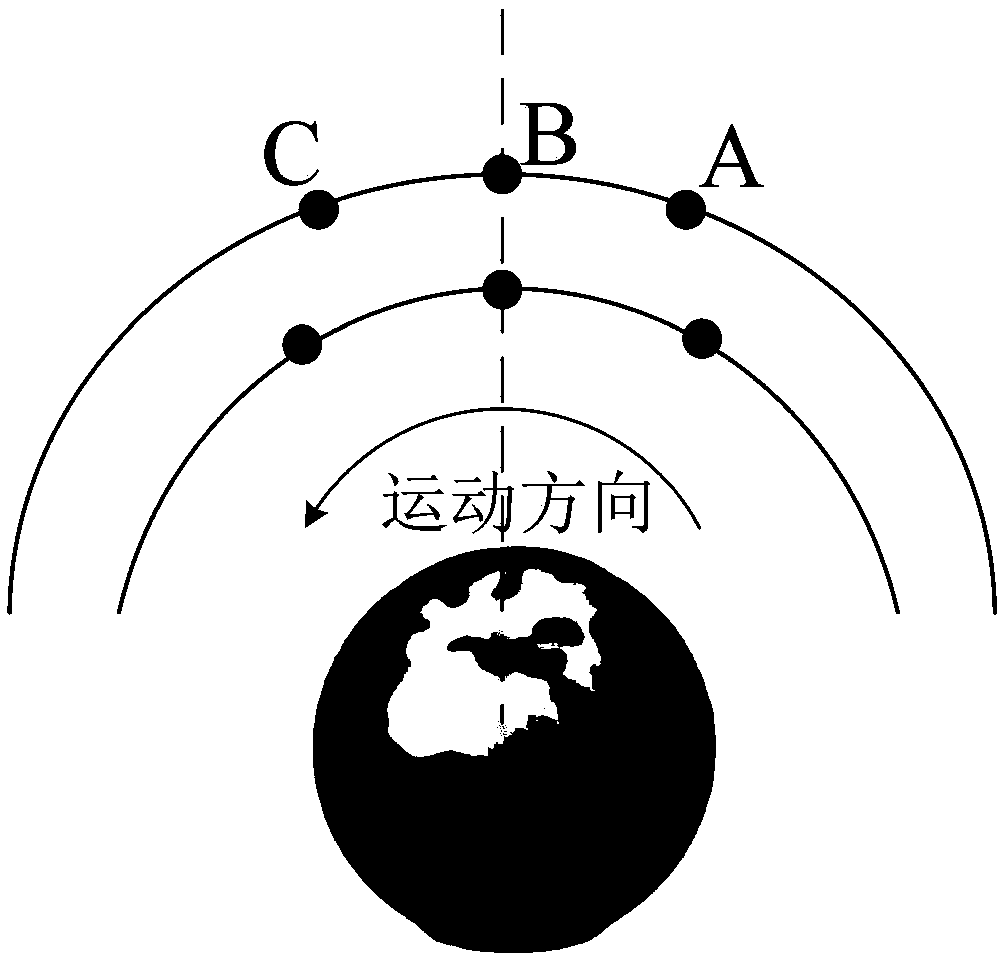Method for determining orbit transferring strategy of time-limited spacecraft coplanar rendezvous
A time-limited and strategy-determined technology, applied to spaceflight vehicles, space vehicle guidance devices, aircraft, etc., can solve the problems of poor observation effect at rendezvous time, affecting the calculation accuracy of rendezvous orbit change strategy, and low lighting conditions. , to achieve the effects of reducing fuel consumption, accurate calculation results, and simple iterative calculation process
- Summary
- Abstract
- Description
- Claims
- Application Information
AI Technical Summary
Problems solved by technology
Method used
Image
Examples
specific Embodiment approach 1
[0030] A method for determining the time-limited spacecraft rendezvous rendezvous and orbit change strategy in this embodiment, the initial orbit of the spacecraft is a high-orbit orbit within hundreds of kilometers below the geosynchronous orbit, and it will always be in the orbit before and after the orbit change. Operate on the equatorial plane, such an area is convenient to carry out on-orbit service to the target spacecraft, and the method is realized by the following steps:
[0031] Step 1. Determine the initial orbital parameters of the target spacecraft and the service spacecraft;
[0032] Step 2, calculating the theoretical minimum time and maximum time of the entire rendezvous process between the target spacecraft and the service spacecraft;
[0033] Step 3: Considering the constraints of the solar illumination angle, calculate the time spent in the entire rendezvous process between the target spacecraft and the serving spacecraft;
[0034] Step 4. According to the ...
specific Embodiment approach 2
[0042] The difference from Embodiment 1 is that in this embodiment, a time-limited spacecraft rendezvous rendezvous and orbit change strategy determination method, the determination of the initial orbital parameters of the target spacecraft and the serving spacecraft in the first step includes: Orbit half Major axis (a), eccentricity (e), orbital inclination (i), right ascension of ascending node (Ω), argument of perigee (ω) and true anomaly (f); among them,
[0043] Orbital semi-major axis a: Indicates the size of the orbit of the spacecraft, half of the elliptical orbital major axis is determined as the orbital semi-major axis, and the size of the orbital semi-major axis is related to the orbital period;
[0044] Eccentricity e: Indicates the shape of the orbit of the spacecraft. The ratio of the distance between the two focal points of the elliptical orbit and the major axis is determined as the eccentricity. The smaller the eccentricity, the closer the orbit of the spacecra...
specific Embodiment approach 3
[0049] The difference from the first or second embodiment is that in this embodiment, a time-limited spacecraft rendezvous rendezvous and orbit change strategy determination method, in the second step, the calculation of the entire rendezvous process between the target spacecraft and the serving spacecraft The theoretical shortest time and longest time process, specifically:
[0050] Let the angle between the position vector of the serving spacecraft and the position vector of the target spacecraft at the beginning of the process be θ 0 , the angular velocity of the spacecraft in orbit is: Theoretically the shortest time T consumed to complete the entire coplanar rendezvous process min and the maximum time T max They are:
[0051] Among them, μ represents the gravitational constant, usually the value is 398600.4415kg 3 / s 2 ; a represents the semi-major axis of the space orbit; ω ci is the angular velocity of the initial orbit of the serving spacecraft, ω ct The angu...
PUM
 Login to View More
Login to View More Abstract
Description
Claims
Application Information
 Login to View More
Login to View More - R&D
- Intellectual Property
- Life Sciences
- Materials
- Tech Scout
- Unparalleled Data Quality
- Higher Quality Content
- 60% Fewer Hallucinations
Browse by: Latest US Patents, China's latest patents, Technical Efficacy Thesaurus, Application Domain, Technology Topic, Popular Technical Reports.
© 2025 PatSnap. All rights reserved.Legal|Privacy policy|Modern Slavery Act Transparency Statement|Sitemap|About US| Contact US: help@patsnap.com



